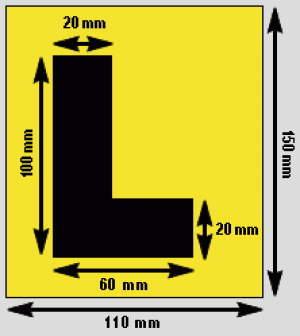Before you start to learn to drive on the road, you’ll need to get a learner licence. Once you receive your learner licence you can start learning to drive in a car or other light vehicle.
To apply for a learner licence you have to be at least 16 years old.
You’ll need to go to a driver licensing agent to:
If you don't pass the theory test the first time, you can rebook to sit it again. You can sit it a second time without having to pay any extra fees. If you need to sit it 3 times or more, you'll need to pay a test fee of $54.60 each time.
This is a computer-based multi-choice test of 35 questions you can take at a driver licensing agent. It covers road rules, hazards and safe driving practices to make sure you have the knowledge to begin driving on the road safely.
The questions appear in a random order and you select the answer you think is correct. You can change your mind after selecting an answer, but it’ll be locked in when you move on to the next question.
You need to get at least 32 questions right to pass the test. If you get more than 3 questions wrong, you’ll need to book another test.
If you fail the test twice on the same day, you’ll need to wait 10 working days before you can sit the test again. This is to give you more time to learn the road rules, and to make sure other people also have a chance to take their test.
When you pass the test, you’ll be given a temporary learner licence, valid for 21 days, to use until your photo driver licence arrives.
Note: please don’t bring children to your test. Having children with you may be a distraction and cause you to fail the test.
You need to be thoroughly familiar with the road rules to pass the test. You’ll find everything you need to know in the road code.
To help you learn the road rules, you can practice with questions from the theory test. You can also use our free website Drive to work through the road code with real theory test questions, games and quizzes.
If you're having trouble getting ready for your theory test because of a reading or language issue, there are several organisations that may be able to help:
People with reading issues can also apply for:
Besides English, the test is available in the following languages:
Talk to your driver licensing agent for more information about these options.
There are also conditions around alcohol and driving.
If you break the learner conditions of your driver licence, you could get 25 to 35 demerit points and a $100 fine.
Important!If you don't follow your licence conditions, the police can stop you from driving. They may tell you to drive straight home, take your keys, clamp your vehicle, or have it moved to where it's not a traffic hazard. |
If you’re driving with a class 1 or class 6 learner licence, you must display L plates on your vehicle.
L plates show other road users that you're a learner driver and help police officers make sure learner drivers are following their learner licence conditions.
The L plate must have a black L on a yellow background and must be no smaller than the measurements shown on the diagram.

If you’re driving a car, van or ute, your L plates:
If you’re riding a moped, you must display an L plate on the back of your moped.
You can buy L plates from driver licensing agents, or you can make your own.
Learning to drive is a big responsibility. It’s important that you develop good driving skills so you’ll be a safe driver on our roads.
You can get training from a qualified professional driving instructor or get a friend or family member to be your driving coach.
Many people do a mixture of both, getting lots of practice with a driving coach but also having some lessons with a driving instructor to improve their skills.
Driving instructors charge a fee for training and must:
Before your first lesson, ask the instructor to show you proof that they hold a current driving instructor endorsement.
A driving coach is someone you know who's willing to teach you how to drive. They must hold a current and valid full New Zealand car licence without a supervisor condition and have held it, or an equivalent overseas licence, for at least 2 years.
Your coach should: